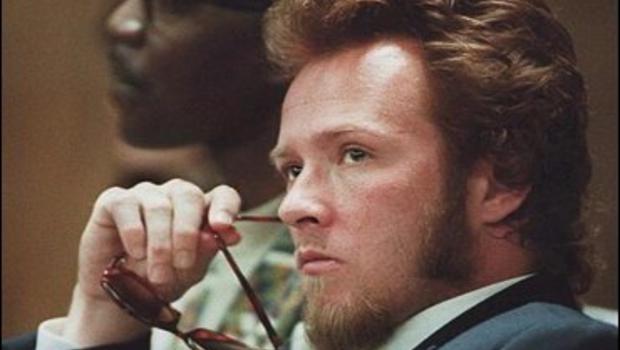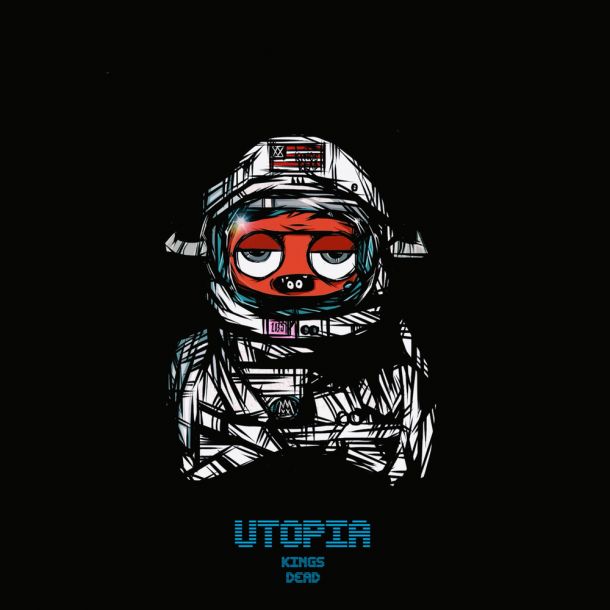
Many people born in the late 1970s and early 1980s have been feeling old this year when they hear that a certain album turned 20 years old. After shaking off that initial feeling, one may realize just how good the music of their youth was and still is as it continues to play on terrestrial radio. For those that feel music on a spiritual level this is a great time for reflection and understanding. Luckily for those in the above mentioned age bracket, those warm feelings of reconnecting with the music of their younger years will manifest throughout 2015 as some of the best albums of the 1990s celebrate their 20th.
The mid-1990s were characterized by varying styles fighting for airplay. Albums from Warren G, Heavy D and the Boyz, Vince Gill, Garth Brooks, The Notorious B.I.G. and Hootie and the Blowfish had their place in the musical landscape of the mid-1990s and many blurred genre lines. "Cracked Rear View" from Hootie and the Blowfish went diamond, selling over 10 million copies and dominating the charts in 1995. However, the alternative music scene was expanding and becoming a way for the socially averse teenager to express what was being held inside.
TV, Drugs & Rock 'N Roll
Before getting into the albums, just think about some of the music events that happened in 1995. "Live From the House of Blues" debuted in 1995. It was a one-hour show that aired just after midnight on TBS and with a glimpse at a variety of live shows from various genres. Another show, "MTV Unplugged," sets the stage for a KISS reunion tour after featuring the band on a show that aired in August. This was also the peak of popularity for "Beavis & Butt-Head."

Of course there were plenty of events that rocked the music world that year. Perry Farrell, Scott Weiland and Steven Adler all have run-ins with the law surrounding drugs. Tupac Shakur goes to jail on a sexual assault charge and holds the number one album while behind bars. He is released on an appeal. Eric Lynn Wright, Eazy-E, dies of complications from AIDS. Selena is shot and killed by her former personal assistant. It was a groundbreaking, yet tumultuous time in musical history.
Other bands or artists that would impact music in the coming years got their start in 1995. Days of the New, Buckcherry and Alien Ant Farm are formed. Kimya Dawson gains local notoreity. Eve 6 and Matchbox Twenty begin their 20-year careers. The boy band renaissance begins anew with the formation of NSYNC.
Not So Alternative
Many releases of 1995 have stood the test of time. "The Woman in Me" from Shania Twain was released in February and was the country singer's first album co-written by the artist herself. While touring with only a backing track, Twain caught the ear, and eventually the heart, of Mutt Lange. The two would create one of the top-five selling country albums of all time.
Country radio was dominated by female artists in 1995. Trisha Yearwood and Alison Kraus released albums within weeks of "The Woman in Me." A woman that would later release a country album, Jewel, makes her debut with "Pieces of You." The story of living in her car accompanies her as the media call once "Who Will Save Your Soul" makes its way to radio.
What was Alternative in 1995?
Still there was a growing movement that was taking place in something being called alternative. Obviously the culture and emergence of independent radio was in place long before its time in the spotlight during the 1990s. A variety of terms were used to try to encapsulate a movement born from the punk era and mixing D.I.Y. ethos with a want to be heard and seen. It was the mid-1990s when the breakthrough occurred.
It was also a time when getting to the record store as early as possible on Tuesday was relevant and something to brag about to your friends. Alternative music was becoming a reason to find a ride to The Wall, Tower Records, National Record Mart or Sam Goody. Its true commercial breakthrough would come later in the 1990s when the line between alternative and mainblurred even further.
The year 1995 was great for those that were identified as alternative, grunge, post modern, etc. It was the time when this music became a part of the maindialogue, but somehow connected with angst-ridden teenagers as a movement. The year in alternative did not start with an album, but rather a radio show. Pearl Jam's Eddie Vedder hosted "Self-Pollution Radio" on January 8. It was a four-and-a-half hour show that made any fans of the Seattle music scene giddy. It featured live sets from Pearl Jam, Soundgarden, Mad Season, Mudhoney and the Fastbacks. Any station that had a satellite receiver could carry the show.
This was a time when many alternative artists had yet to co-opt with major labels although the transformation into the mainwas definitely underway. Blink-182 released their debut album on Cargo Music and found success within the so-called skate punk scene. Silverchair's "Frogstomp" finds success on indie label Murmur before being picked up by Epic Records. The debut album from Garbage is a product of Almo Sounds that was designed as a boutique label and only active for four years.
While some independent labels were finding success on their own, many artists were with labels being distributed through larger corporations or simply signed to those bigger companies as they saw the value in the alternative. P.J. Harvey's breakthrough album "To Bring You My Love" was released by Island Records. The album made Rolling Stone's original list of the 500 greatest albums of all time. It was a darker album with more musical complexity that centered around the theme of longing and loss.
This type of sentiment would continue to connect in the mid-1990s and may have been best exemplified by the debut of Mad Season. The super band formed by members of Alice in Chains, Pearl Jam, Screaming Trees and the Lamont Cranston Band released their only studio album through Columbia. "Above" went on to gold status despite lyrics from Layne Staley that chronicled his battle with drug addiction. The album meandered its way through dark passages with songs such as "River of Deceit" and "Lifeless Dead." Staley also contributed the album cover art, which was a devilish re-creation of a photo of Staley and his former girlfriend Demri Lara Parrott. Parrott would die of a heroin overdose in 1996. For the author, Staley's contribution to music rivals that of Kurt Cobain for many others. It is music at a higher level.
Staley and Alice in Chains would release their self-titled, third album later in the year. Death and depression were common themes. The gloominess of the album comes through in the down-tuning of the riffs. Despite the album debuting at number one on the Billboard 200, the band decided not to tour. Guitarist Jerry Cantrell was frustrated but also knew that Staley's heroin addiction was getting out of control. The band made a couple music videos and received two Grammy nominations, but it would be the last studio album before Staley's death in 2002.
Alternative for the Masses
Wilco has stood the test of time and their debut album "A.M." was released in 1995. It was considered a direct competitor to Son Volt's "Trace" since both bands were made of members formerly of the band Uncle Tupelo. Wilco members later called the album a failure. However, it was the beginning of a cult-like following for the Chicago-based band. This cult is a lot happier and sticks by the band despite its transformative nature.
At the time of its release "Jagged Little Pill" from Alanis Morissette was alternative for the subject matter. Addressing potential sexual acts in a movie theater is not something one heard everyday. It was a transition for Morissette who left MCA after her first two albums that had more of a dance feel. She hit the alternative genre with an edge. However, that edge was the result of a horrible incident in which Morissette was robbed at gun point. She stated that she had to put her feelings into the lyrics to get away from the attack. Stephen Thomas Erlewine of AllMusic stated at the time of release, "As slick as the music is, the lyrics are unvarnished and Morissette unflinchingly explores emotions so common, most people would be ashamed to articulate them." This may have been why so many people connected with it.
In July of 1995 something a little different began to slowly take over MTV as 311 introduced a new flair to reggae rock. The Omaha band already had a big underground following and was about to reach commercial success with an album that was recorded live. The album's biggest hit, "Down," was not released to radio until 1996.
Of course the bigger reggae rock release of 1995 was "Tragic Kingdom" from No Doubt. Gwen Stefani just finished up her first stint as a coach on "The Voice" and used "Just a Girl" to try and persuade female competitors to join her team. "Dont Speak" hit number one on the Billboard Hot 100 Airplay, although it was not released as a single until 1996. The marketing plan for "Tragic Kingdom" focused on the skateboarding community and high school students. Stefani hosted an edition of "Channel One News" that aired only in high schools throughout the country. Lisa Ling and Anderson Cooper got their start with "Channel One News" and it was the program that helped No Doubt reach great heights in the year and a half after "Tragic Kingdom" was first released.
The fall of 1995 brought the second studio album from Oasis, "(What's the Story) Morning Glory?" It was full of ballads and crossed radio platforms. "Wonderwall" is easily one of the best songs of the 1990s. The Gallagher Brothers were always good for an interesting quote and still find themselves in the news from time to time. It was hard to avoid any of the singles released from the album and hearing them today still brings so many emotions. There is a sense of nostalgia when "Champagne Supernova" comes on and those chords send the listener through a series of emotions. Most likely that person is also singing along.
In October The Smashing Pumpkins released "Mellon Collie and the Infinite Sadness" and it would debut at number one. The two-disc set would spur six singles across a variety of musical styles. Four of those would become crossover hits on Top 40 radio. The album earned seven Grammy nominations and put Billy Corgan in the spotlight. His strong personality may be part of the reason that bassist D'arcy Wretzky and guitarist James Iha left the band. With Wretky there were also drug issues. Iha has said that he and Corgan have not spoken for some time.
There were plenty of other albums that fell into the alternative spectrum in 1995 that readers may relate to and need to re-listen when their anniversary comes. The Goo Goo Dolls made their last album before becoming soundtrack kings. Our Lady Peace finally made their way across the border from Canada. Mudhoney was one of many artists to have an album released by Reprise Records. Reprise also released the debut from Filter in 1995 and "Hey Man, Nice Shot" still plays on alternative radio.
Let's not forget about the one-hit wonders of 1995. Dog's Eye View provided some ear candy with "Everything Falls Apart." Dishwalla contributed "Counting Blue Cars," a song that would forever pop in your head for no reason at all. Another song with those exact qualities, "Breakfast at Tiffany's" by Deep Blue Something, was released in the summer of 1995. The Toadies have created plenty of music since, but "Possum Kingdom" was one of the biggest songs of 1995 despite coming from the 1994 album "Rubberneck." Pittsburgh's Rusted Root found fame with "Send Me on my Way."
So what does this all mean? Well for some of you it just means you feel older than you did when you started reading. What this really shows is just how much of an impact the music of the mid-1990s has had over the years. So much of it still lives on radio and there is definitely a need for 90s radio and playlists. At times it seems like this music has quickly become the classic rock for those currently in their 30s and they are struggling to connect with anything newer.
Perhaps their was a more special connection that is harder to explain. The music spoke to things that were not generally discussed. The year of 1995 was especially tough for those still grieving from the death of Kurt Cobain. There was an angst coupled with a search for something more and the teenagers of 1995 were trying their best to find an emotional comfort. There was pain and darkness, but also security in knowing you were not alone.
It is not to say this is the only time in the history of music that there was a spiritual level of connection. One can guess the age of the author behind this as timing is a big part of the music meaning something more. Timing was also good for a lot of the alternative artists as the breakthrough came in 1995 for several artists that had been struggling in the business.
If this is the music of your youth, enjoy the next year as the 20th anniversary of some of the most pivotal albums and musical moments of our lifetime hit. If you would like to relive this music, there is a running Spotify playlist available here. It expands what is discussed here by including singles that were released in 1995 regardless of album release date. Have something to add? Let us know.
Happy holidays and a happy new year to you and yours.








